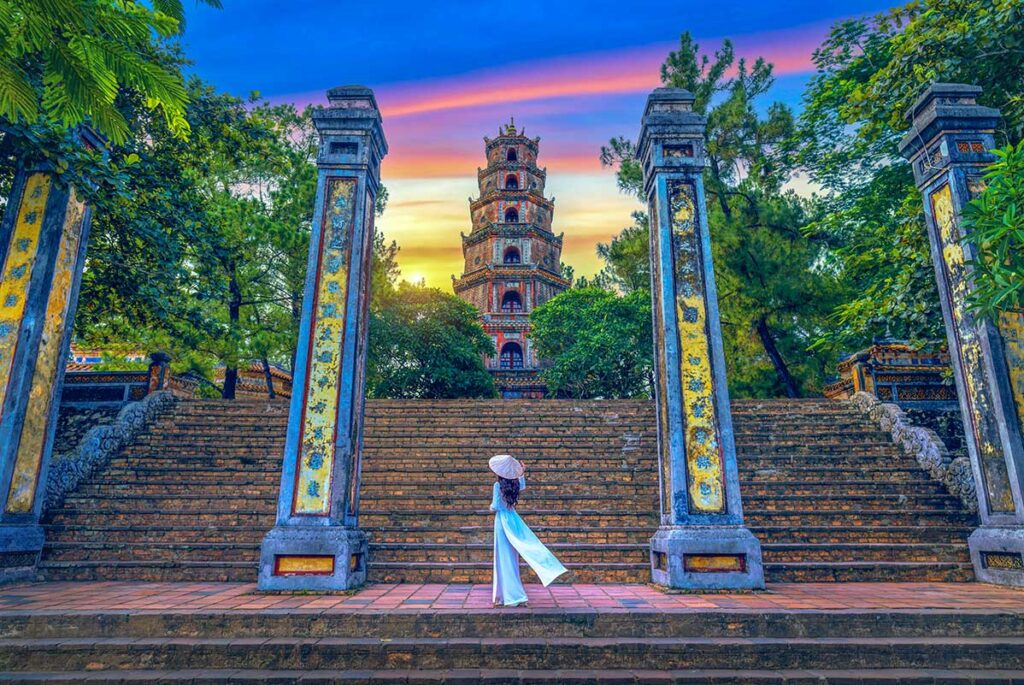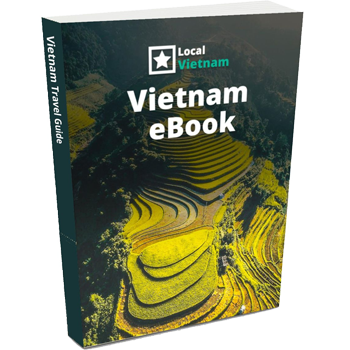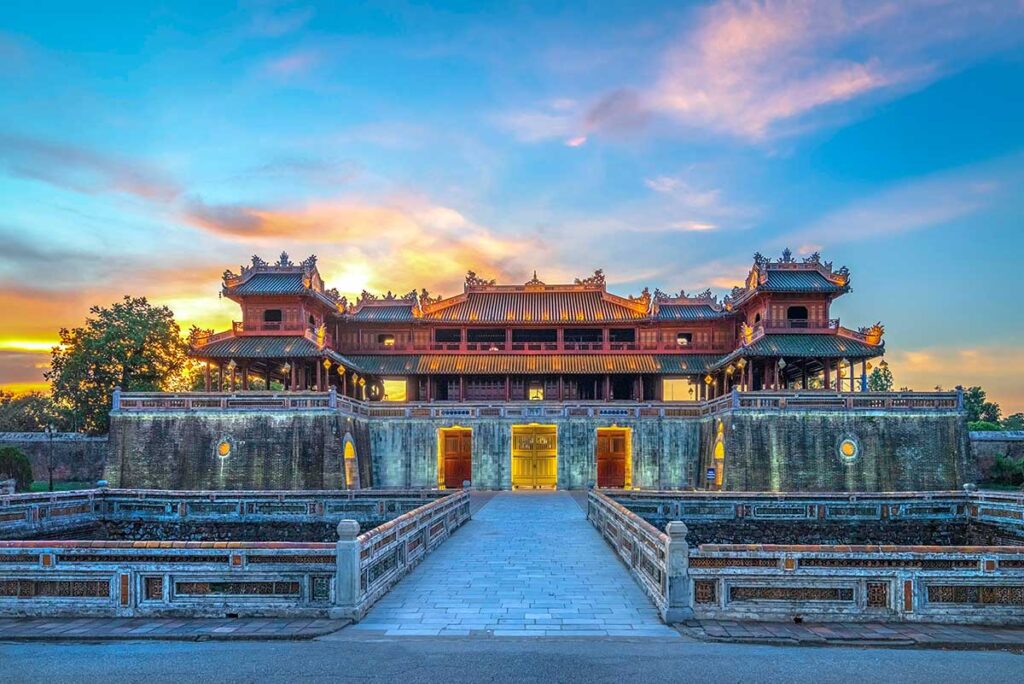What is Thien Mu Pagoda?
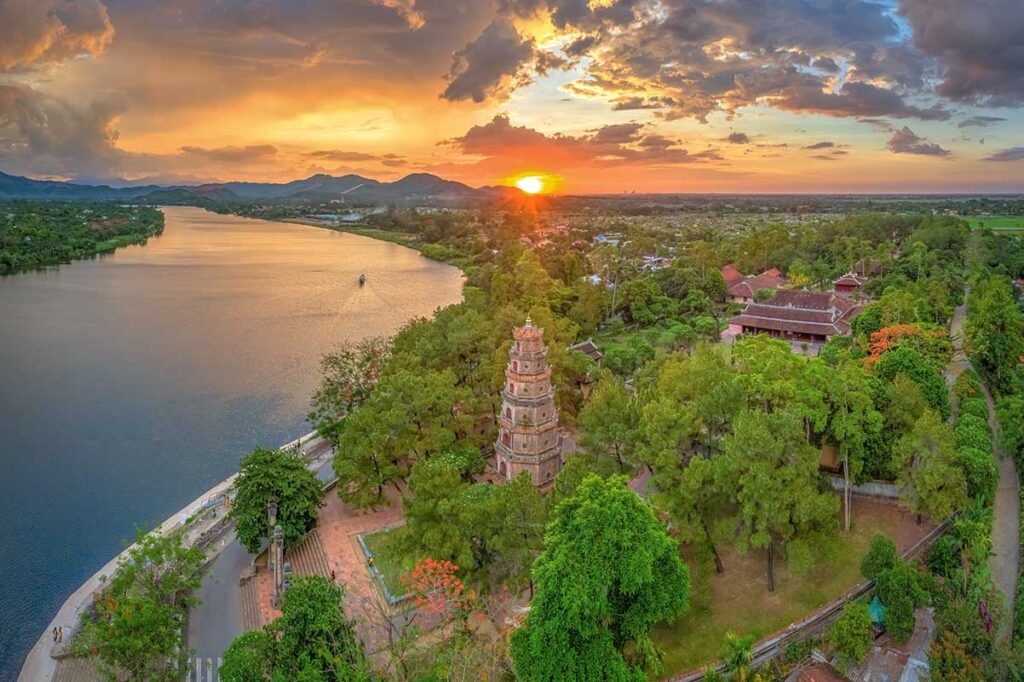
Thien Mu Pagoda, or the Pagoda of the Celestial Lady, is a historic Buddhist temple located on a small hill overlooking the Perfume River in Hue. With its distinctive seven-tiered tower, it’s one of the most recognizable symbols of the city. The pagoda is not only an active place of worship, but also a cultural and historical site deeply tied to the legacy of the Nguyen Dynasty and modern Vietnam.
History of Thien Mu Pagoda
A pagoda born from legend
The story of Thien Mu Pagoda begins in 1601, when Lord Nguyen Hoang—the first Nguyen ruler of southern Vietnam—was exploring the area. Local villagers told him about a mysterious old woman, the “celestial lady”, who appeared on a hill and prophesied that a great leader would build a temple there to protect the country. Inspired by the legend, Nguyen Hoang ordered a pagoda to be built on the hilltop, naming it Thien Mu, which means “Heavenly Lady.”
Growth under the Nguyen Dynasty
Over the next two centuries, the pagoda remained an important religious site, but it was during the reign of the Nguyen emperors that it gained national significance. In 1844, Emperor Thieu Tri commissioned the construction of the Phuoc Duyen Tower, the iconic seven-tiered pagoda that stands today. Each level of the tower is dedicated to a different Buddha, and the structure quickly became a symbol of Hue and Vietnamese Buddhism.
A symbol of protest during the War
In the 1960s, Thien Mu Pagoda became a center of Buddhist resistance during growing tensions with the South Vietnamese government. Under President Ngo Dinh Diem, policies discriminating against Buddhists led to nationwide unrest. In 1963, the pagoda became linked to the powerful image of monk Thich Quang Duc, who self-immolated in Saigon to protest religious oppression. The car he drove to Saigon remains on display at the pagoda, drawing visitors from around the world.
Highlights & architecture
Today, Thien Mu Pagoda is not just a historical monument—it’s still an active place of worship. You’ll often see monks walking through the grounds, tending the gardens, or taking part in daily rituals. While some areas are off-limits to the public, visitors are welcome to explore most of the complex. The layout is calm and compact, with a clear path from the entrance gate through the pagoda grounds and toward the river. Here are the key highlights you’ll see during your visit:
1. Scenic location on the Perfume River
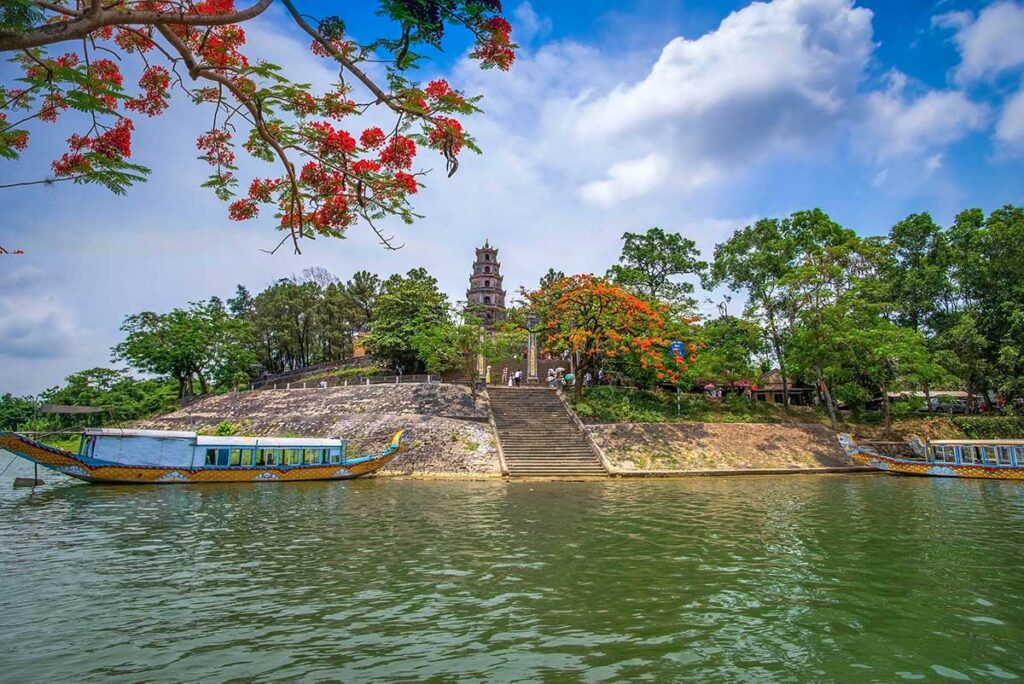
The setting of Thien Mu Pagoda is part of what makes it so memorable. Perched on a gentle hill above the Perfume River, the pagoda offers sweeping views of the water and surrounding countryside. It’s a popular stop for dragon boat rides, which arrive at the small riverside dock just below the tower — an especially scenic way to reach the site.
In the early morning, the grounds feel peaceful and spiritual. In the evening, the pagoda is softly lit and the area around it becomes a favorite hangout for local students and young couples, who come to enjoy the view or sit quietly along the stone riverbank. The combination of historical weight and everyday life makes the location feel both special and alive.
2. Tam Quan Gate
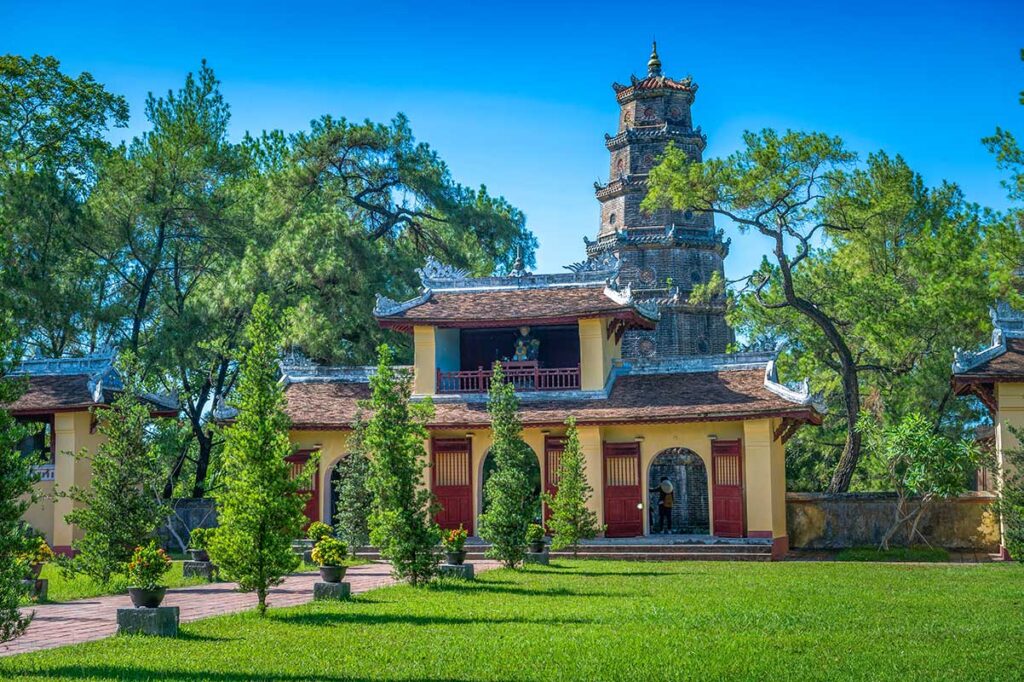
This is the main entrance gate to the pagoda, located just past the outer courtyard. It’s a triple-arched gate, symbolizing the Buddhist concept of three realms: human, demonic, and divine. The gate has two floors and eight tiled roofs, with a small shrine housed on the second level. On either side stand Dharma guardian statues, protecting the sacred grounds beyond.
3. Phuoc Duyen Tower (Tháp Phước Duyên)

Built in 1844 by Emperor Thieu Tri, this seven-story octagonal tower is the most iconic structure in the pagoda and a symbol of Hue. At 21 meters high, it’s visible from across the Perfume River. Each level holds a statue of a Buddha, and while the interior is closed to the public, you can walk around its base to admire the details. Its simple but powerful design is often featured in photos and local poetry.
4. Dai Hung Shrine (Main Hall)
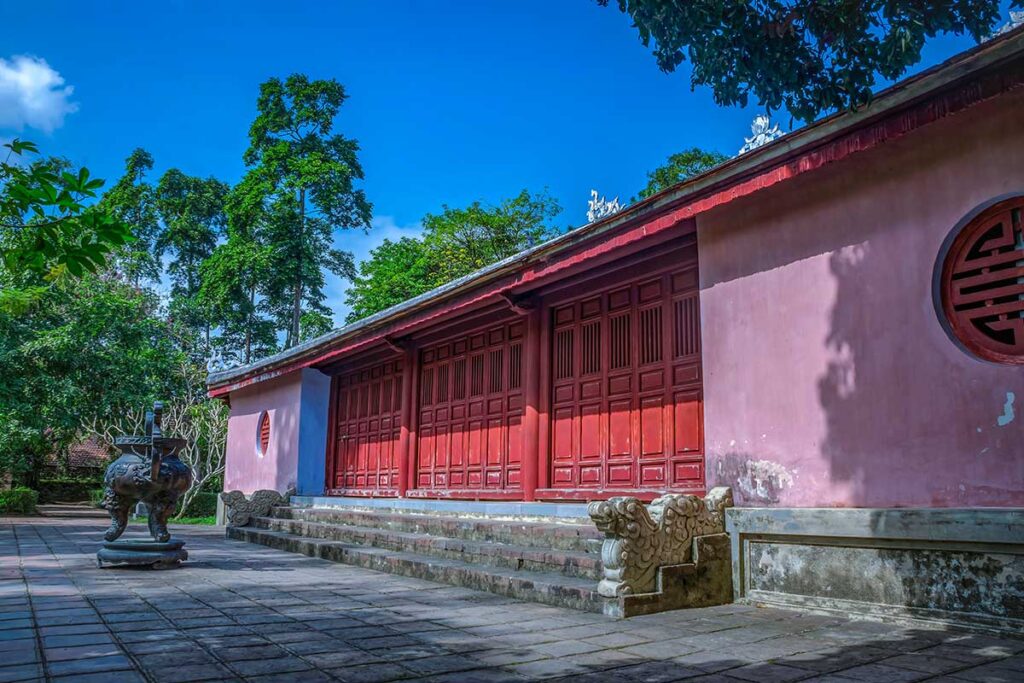
This is the central prayer hall, located just beyond the tower. The building features dark wood, curved tile roofs, and detailed carvings in traditional Vietnamese style.
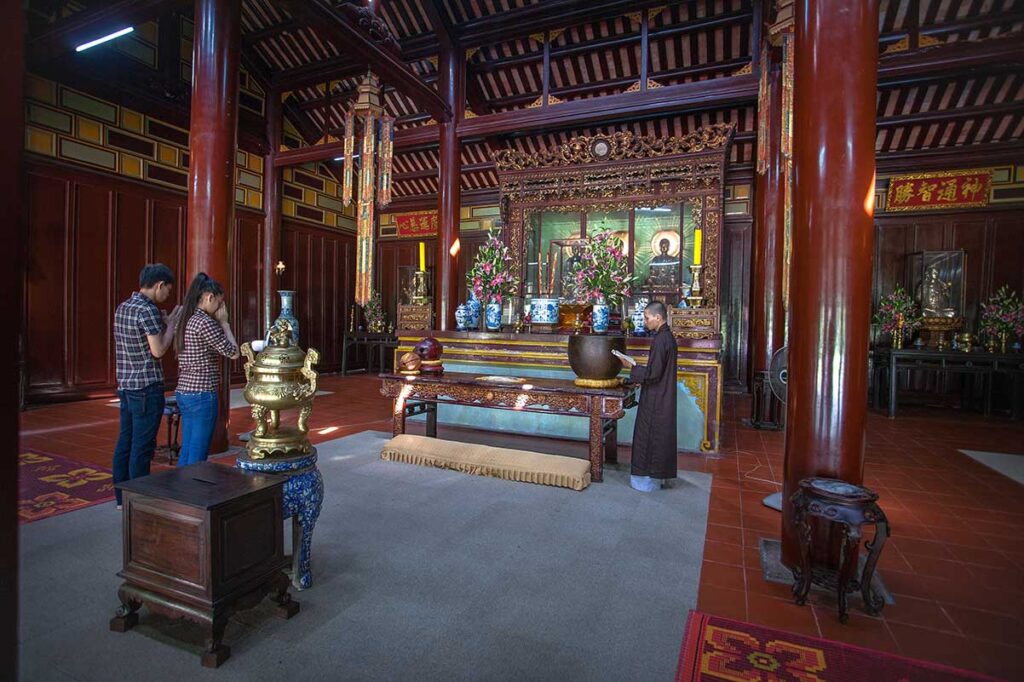
Inside are large statues of the Three Buddhas, flanked by offerings, flowers, and incense. This is where daily worship takes place, and you may see monks chanting or lighting incense during your visit. Please enter quietly and dress modestly if you step inside.
5. Bell Tower and Drum Tower

Flanking the main shrine are two traditional towers. The bell tower holds a bronze bell cast in 1710, weighing over 2,000 kg. It’s considered a masterpiece of 18th-century bronze casting.
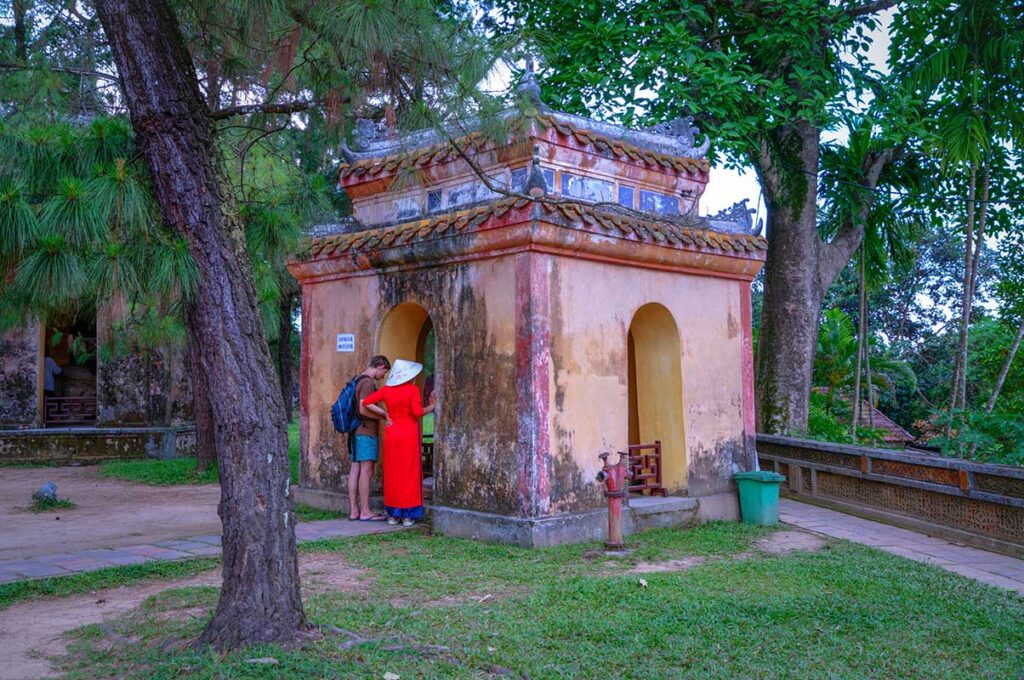
Opposite it stands the drum tower, used during ceremonial occasions. Together, they form a symbolic balance of sound and silence in Buddhist ritual practice.
6. Stele Pavilion and Stone Turtle
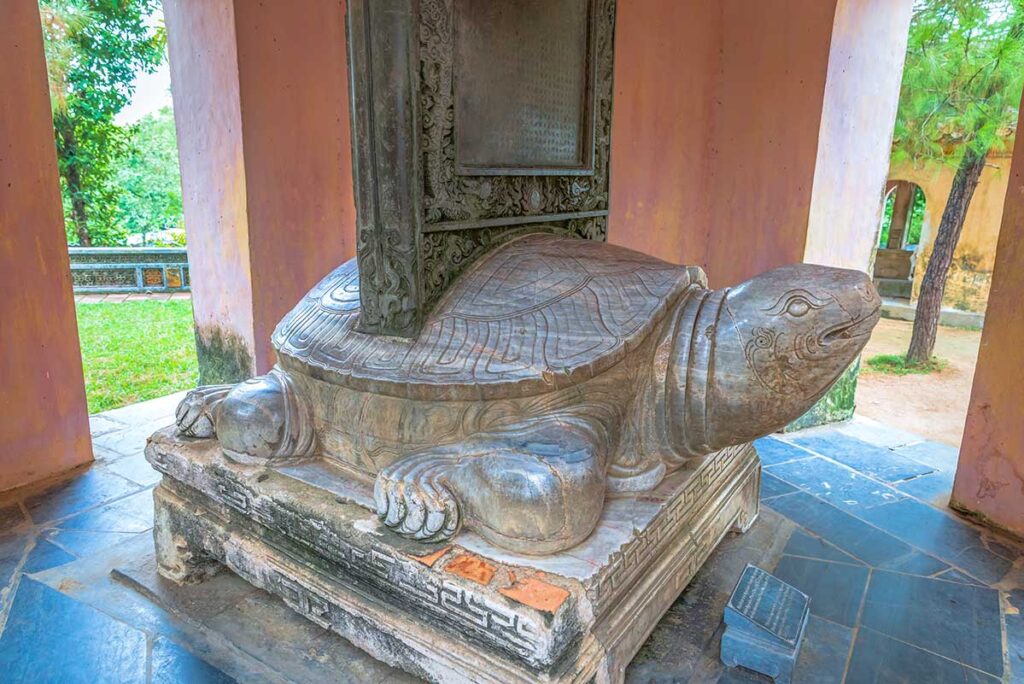
Near the bell tower is a small open-sided structure housing a stone stele placed on the back of a carved marble turtle, a Vietnamese symbol of longevity. The stele dates to 1715 and records the history and cultural significance of the pagoda. It’s a subtle but important artifact of the Nguyen Dynasty’s support for Buddhism.
7. Gardens and Bonsai Trees

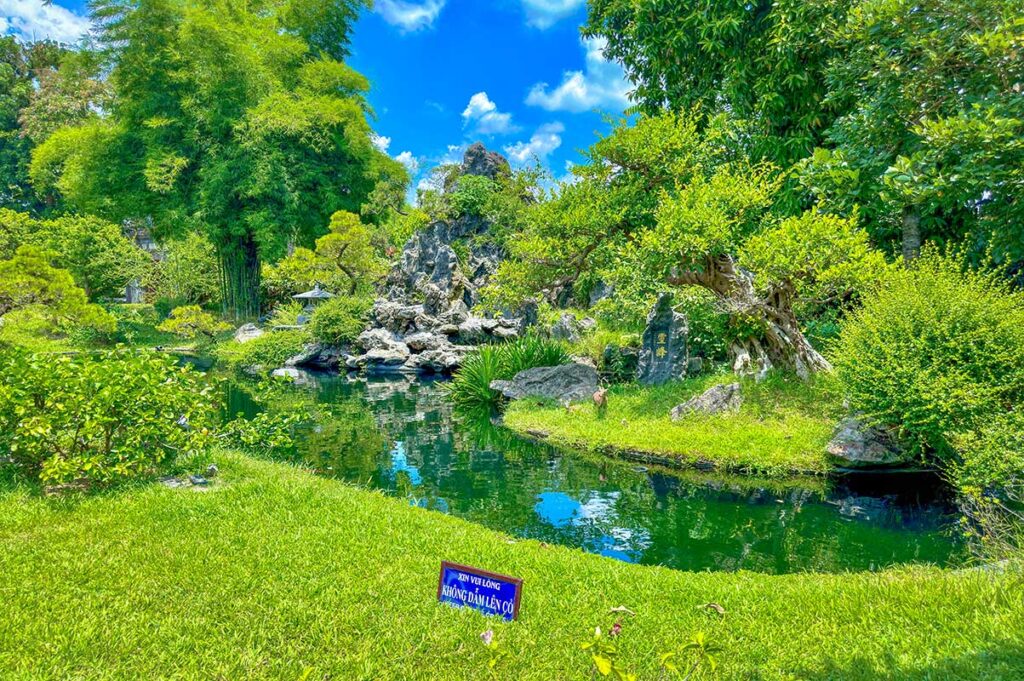
The grounds of the pagoda are filled with bonsai trees, flowering plants, and quiet walking paths. It’s a peaceful place to take a break from the city. Early in the morning or late in the day, the garden feels especially calm, with river breezes and distant chanting from the monastery.
8. Dia Tang and Quan The Am Palaces
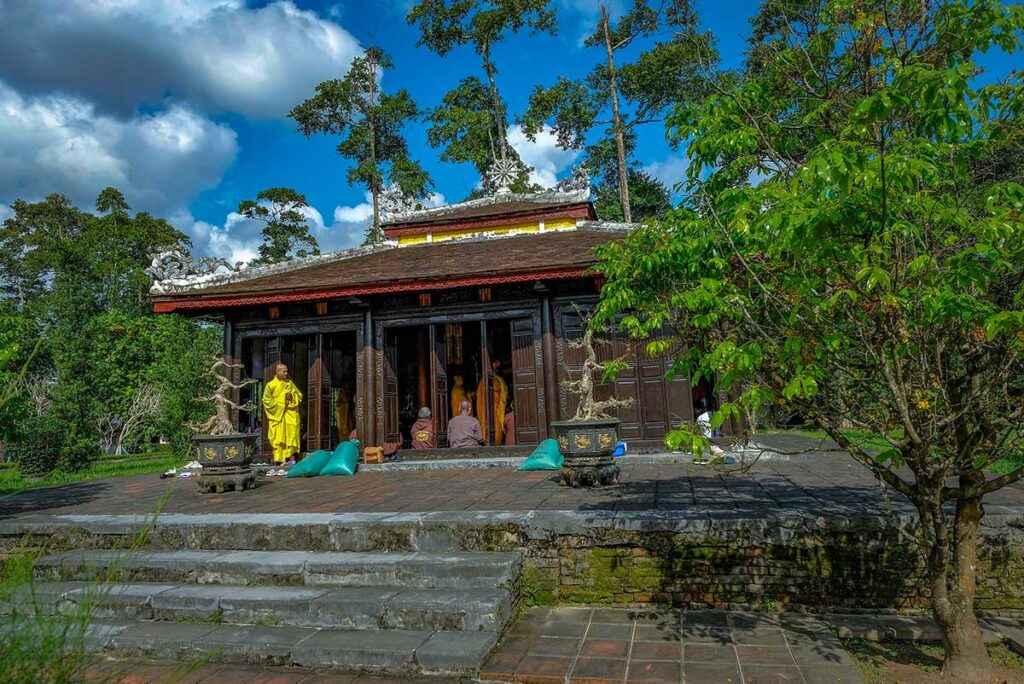
Behind the main hall, you’ll find Dia Tang Palace, home to a bronze statue of Avalokitesvara Bodhisattva sitting on a lotus base. The nearby Quan The Am Palace is much simpler, tucked into the trees and lacking ornate decoration, but both halls offer insight into different aspects of Mahayana Buddhist belief. These are often quieter areas of the complex and may be closed during certain times of day.
9. Thich Quang Duc’s Car
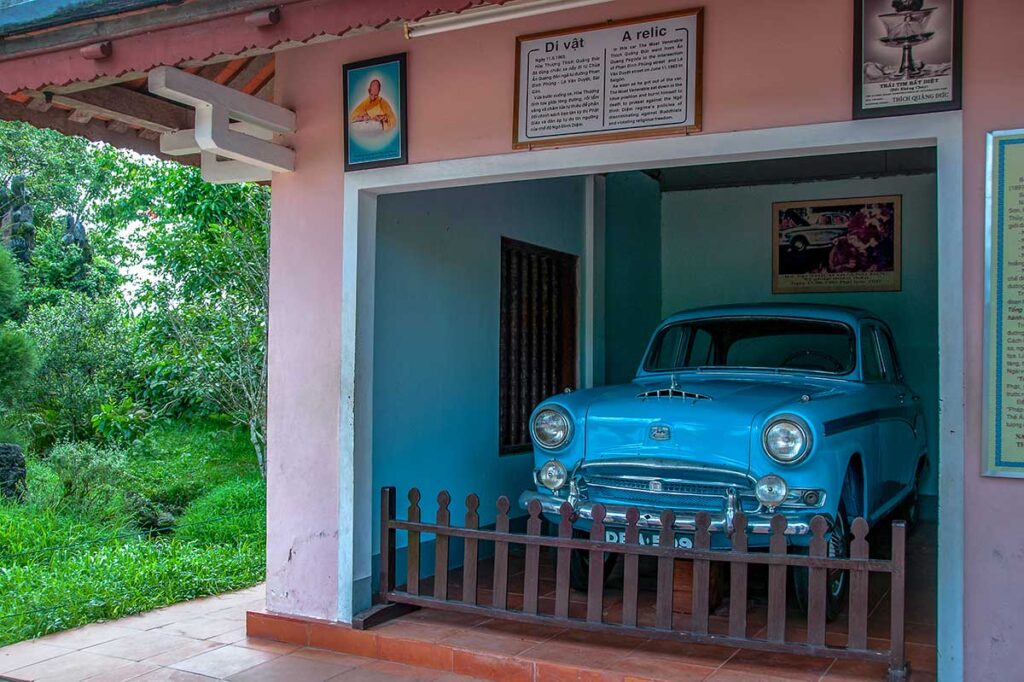
Near the rear of the pagoda grounds is a glass garage containing the blue Austin car used by monk Thich Quang Duc, who famously self-immolated in Saigon in 1963 to protest religious oppression. The vehicle has become a powerful symbol of Vietnam’s modern Buddhist movement and a sobering reminder of the pagoda’s political history.
10. Tomb of Thich Don Hau
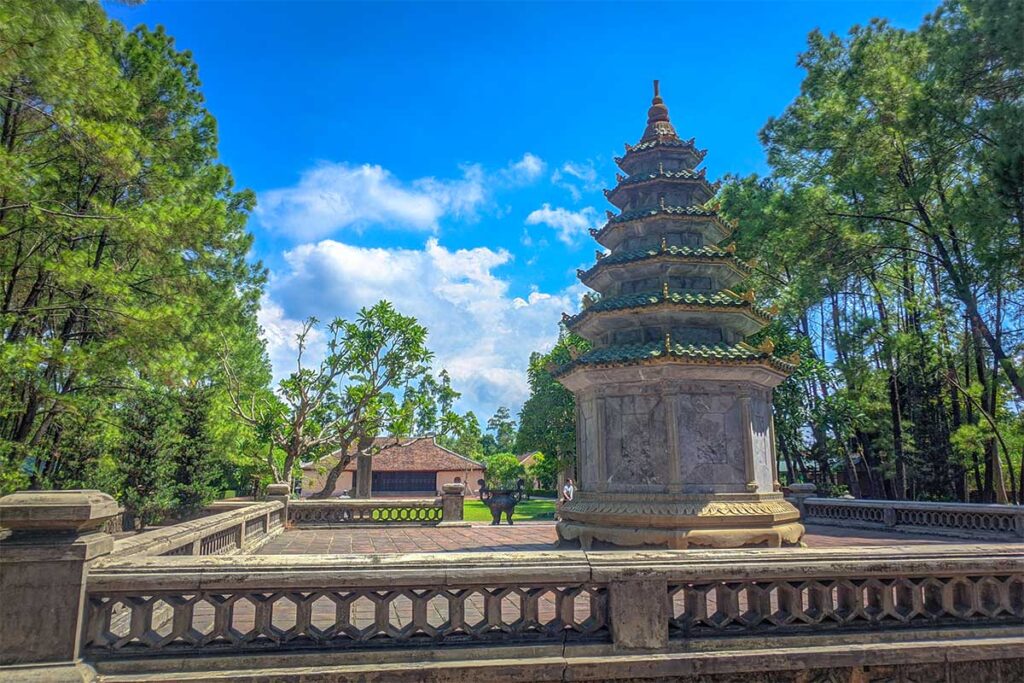
At the far end of the complex, you’ll find the tower tomb of Venerable Thich Don Hau, a respected abbot who devoted his life to reviving Buddhism and serving the local community. His legacy is honored with a modest stupa-style structure that many Vietnamese visitors quietly stop at to pay their respects.
Visiting information
Location
Thien Mu Pagoda is located on Ha Khe Hill, in Kim Long Ward, about 4 to 5 kilometers west of Hue’s city center. It sits directly on the northern bank of the Perfume River, making it easy to reach by both road and river. The elevated position provides sweeping views and adds to the pagoda’s serene atmosphere.
Entrance Fee
There is no entrance fee to visit Thien Mu Pagoda — it’s free for all visitors.
Opening times
The pagoda is open all day, every day, with no formal closing time. Mornings and late afternoons offer the best atmosphere.
Dress code
There is no strict dress code, but as it is an active place of worship, respectful clothing is recommended. Avoid shorts, tank tops, or anything too revealing. If entering shrine areas, remove hats and speak quietly.
Travel tips for visiting Thien Mu Pagoda
To make the most of your visit to Thien Mu Pagoda, a few simple tips can really improve the experience — especially if you want to avoid crowds or enjoy the site in a more unique way.
Arrive by Dragon Boat
One of the best ways to reach the pagoda is by dragon boat from the city center. Boats depart from the Toa Kham boat station near the Imperial City and follow the Perfume River upstream. It’s a short and scenic ride, and the first thing you’ll see as you approach is the seven-story tower rising above the trees — a beautiful arrival view that you won’t get by road.
Hue Historical City Tour By Small Group or Private Tour
- Includes: Hue Imperial City, royal tombs, and a scenic dragon boat ride.
- Flexibility: Private option lets you customize the itinerary to your interests.
Visit in the early morning
If you want to experience the pagoda at its most peaceful, come early in the morning, ideally before 8:00 AM. There are often no tour groups at this time, and the atmosphere is calm and quiet. You might even see monks beginning their day, sweeping the grounds or preparing for morning prayers.
Alternative: Late afternoon for sunset
Another great time to visit is late afternoon, especially if you arrive by boat. You’ll get a chance to see the sunset over the Perfume River, and the pagoda begins to glow as the lights come on around dusk. This is also when local students and young couples gather along the riverside, giving the area a relaxed, local vibe.
Combine with Hue Imperial City
While the pagoda isn’t right next to the Imperial City, it’s on the same side of the river and only about 4 km away (roughly 8 minutes by car). A perfect itinerary is to start your morning with a dragon boat to Thien Mu, visit while it’s still quiet, and then book a Grab car to the Imperial City. This way, you’ll avoid midday crowds at both sites and get the most out of your day.
Respect the active monastery
Thien Mu isn’t just a tourist site—it’s a working monastery, and the monks who live here go about their daily routines. Avoid entering residential areas or rooms with restricted access, and be especially quiet near prayer halls. If a ceremony is in progress, it’s okay to watch quietly, but don’t take flash photos or interrupt.
